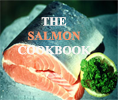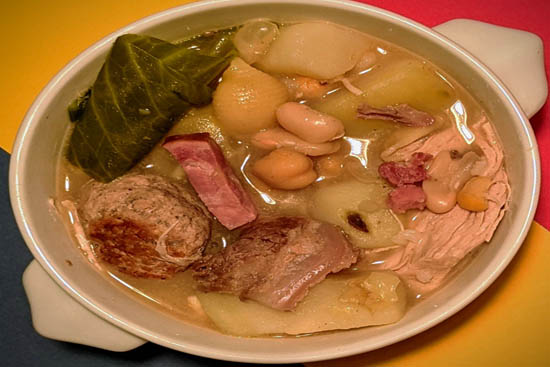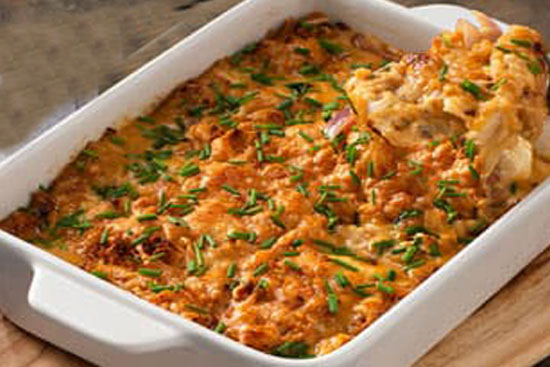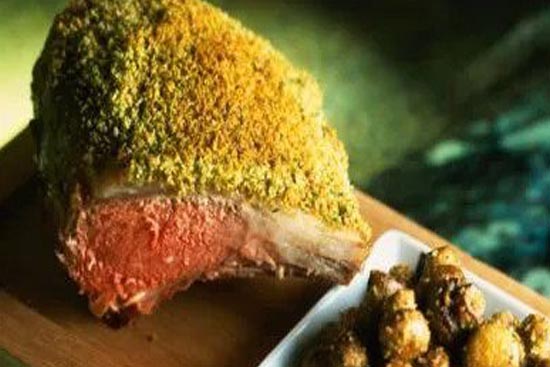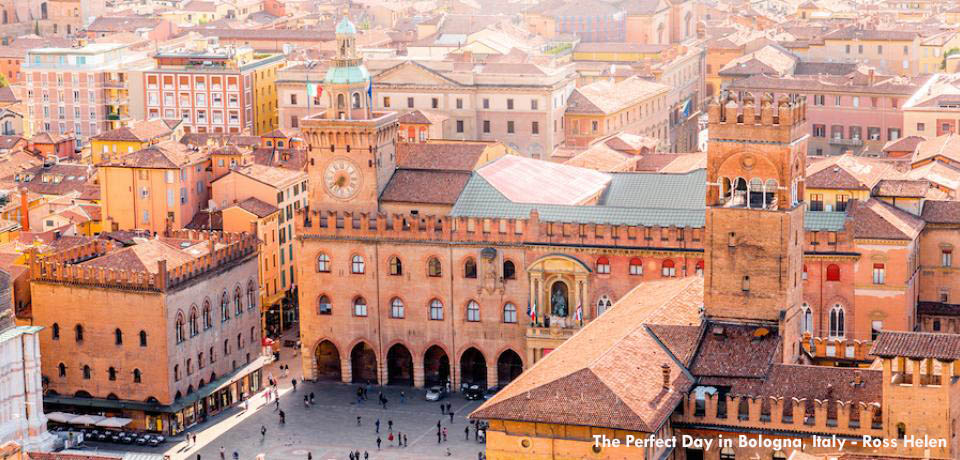
Emilia-Romagna, Italy
Foreigners thinking of luxurious Italian food usually think of classic Emilia Romagna cuisine. The land of plenty is known for its flavorful produce dishes. Bright green asparagus is served with Parmigiano Reggiano and melted butter. The sweet chestnut known as Marrone di Castel Rio comes from Emilia Romagna, as do porcini mushrooms. Local shallots and olive oil pressed from local olives are prized for their quality.
Pasta is a favorite food in the region. While polenta, rice and gnocci were staples in Emilia Romagna cooking, fresh egg pasta is now more popular. Most areas consider tagliatelle their favorite shape and serve it with ragù, but the smaller regions have widely differing opinions on other types of pasta.
Bologna’s specialties include lasagne verdi, a layered pasta dish made with spinach flavored pasta sheets, meat ragout and béchamel. Gramigna, curly tubes of pasta served with sausage, are also native to Bologna. Pasta is mixed with ragù, broth, cheese, bread crumbs and white truffles when available, then topped with a pie crust and baked to make pasticcio di tortellini.
Parma is famous for serving the tagliatelle with a sauce made with browned chicken livers, beaten egg yolks and grated Parmigiano Reggiano cheese. Emilia Romagna recipes also include tortelli, or large pasta squares, filled with ricotta and greens and served with melted butter.
Parma and Piacenza are the two homes of anolini. These pockets of dough are filled with herb scented meats and vegetables and brought to the table in poultry broth topped with a generous sprinkling of grated Parmigiano Reggiano. In Piacenza, pisarei e fasò is eaten. These small circles of pasta are served with red borlotti beans and tomato sauce with locally made Parmigiano Reggiano cheese.
In Ferrara, cappellacci translates to big hats. These dumplings are stuffed with squash. Reggio’s cappelletti, or little hats, have a filling of minced meats held together with bread crumbs, eggs and grated cheese. Romagna also serves a dumpling called cappelletti, but the filling contains pork and turkey breast with cheese and herbs. They are served in broth or a meaty pork ragout.
Romagna is famous for garganelli, a dish of pasta with a béchamel with tomatoes, chicken livers, veal, prosciutto and herbs. Dumplings known as passatelli are made in Romagna. The dough is made from bone marrow, grated grana cheese and bread crumbs bound with raw eggs, extruded into noodle shapes. It is both cooked and served in beef broth.
While pasta is undeniably the favorite food in Emilia Romagna cuisine, bread is also very popular. Freshly baked rolls known as coppiette can be found everywhere. Local flatbreads can be purchased in each region. Romagna’s circular piadina or piada wrap cheese, greens or prosciutto in dough and bake on tiles or griddles. Focaccia is called spianata or torta salata unless it is flavored with salt pork, as they do in Bologna, where they call it crescentina.
Emilia bakers prepare borlengo, nearly translucent sheets of dough, seasoned with garlic, rosemary and salt pork, and serve quartered with Parmigiano. These seasonings are also used on tigelle, a handheld bread similar to the English muffin.
Erbazzone are baked or fried tarts filled with greens, salt pork, garlic and onions. If they are baked in a crust, they are called scarpazzone. These pastries are commonly eaten in Reggio.
Many kinds of deep fried fritters, sometimes flavored with sausage, proscuitto or pork crackling, are eaten in Emilia. They were traditionally fried in lard, though they are now usually cooked in oil. Some examples include the Piacenza burtleina, torta fritta in Parma, Modena’s gnocco fritto and Reggio chizza. Bologna’s famous fritto misto offers a selection of fried meat and vegetables. Fried pasties known as cassoni include spinach and raisins in their filling.
Emilia Romagna cooking often takes advantage of the famed quality of their cured pork. Prosciutto di Parma’s flavor is unparallelled. Even more valuable is Culatello di Zibello, a tender cut of pork from the back leg. The piece of meat is difficult to remove and prevents the rest of the meat on the leg from being used for proscuitto, raising the cost of the salumi.
Bologna is known for their mortadella, a sausage made from ground pork, pieces of pork fat and sometimes pistachios. Modena’s sausage made from pork feet is eaten with lentils at the New Year for good luck.
Capocollo, or Coppa Piacentina, comes from Piacenza, as do Pancetta and Piacentina. Tidbits of pork are mixed with spices and red wine to make Ferrara’s salama da sugo. The mild salame gentile is produced everywhere in Emilia.
In addition to the Romagnola breed of cattle, rabbit, game birds and poultry are eaten. Wild duck and tomatoes are stewed with herbs, white wine and served with risotto. Cappone ripieno, or roasted capon, is stuffed with with a marsala flavored veal and ham filling. Other popular meats include pork, lamb and mutton. Proscuitto and fresh fruit are served together for a refreshing appetizer.
Cesenatico is known as having the most delicious brodetto, or fish soup, of the Adriatic. Eel is served roasted, grilled or cooked in a tomato, onion and garlic sauce, as in anguilla alla comacchiese.
Emilia is well known for Parmigiano Reggiano, but the Grana Padano and Provonole Valpadana are also extremely high quality. Young cheeses are used while sweet or aged to permit grating and develop a sharper flavor. Ravaggiolo and squaquarone are also creamy piquant cheeses used in cooking.
After so many rich dishes, it’s appropriate that many Emilia Romagna desserts are based on fresh fruit. Melons, stone fruits, berries, and pears are especially loved. Chestnuts are also used often in this region’s desserts.
Not all desserts are made from fruit, though. Emilia Romagna recipes for desserts include sweet pastas, baked cookies, pastries and tarts. Some favorite cakes are an apple cake from Ferrara and Bologna’s certosino, which is a spice flavored cake. Modena boasts a crumble flavored with lemon. Gialetti from Romagna is a good example of their cookies, made with cornmeal rather than wheat flour. Piada dei morti is a sweet flatbread made with raisins and nuts.
The wines of Emilia-Romagna, Italy
Emilia-Romagna has a long history of wine production- grape growing here is old even when you consider the fact that Italy is one of the crucibles of wine production! Winemaking and commercial grape-growing date back to the 7th Century BC to the pre-Roman Etruscans. Evidence has shown that these ancient people- some of the first agrarian settled farmers in the Italian peninsula, did not use the same species of vine we use today! The Etruscans used the ancient and now near-extinct Vitus Labrusca species, whereas across the majority of the wine world today we use Vitus Vinifera. The world-famous Lambrusco wine is actually a hybrid of these 2 species! Emilia-Romagna is considered the meeting point between the south and the north, a mix of the southern agrarian lifestyle and northern modernity, and is located mid-thigh on Italy’s boot. It is the 4thlargest state in mainland Italy and has always been known as a fertile and productive region, in fact its capital Bologna is where Spaghetti Bolognese was invented! The perfect food to match with the region’s wines!
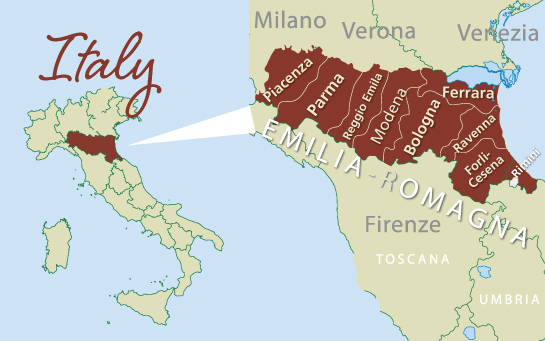
So large is Emilia-Romagna in fact, that when speaking about its wines, it is split into 4 separate zones, each with distinctive climactic and geographical differences and therefore producing very different wines. About 85% of production from Emilia-Romagna is drink-early, entry-level wines from one of the 9 IGT rated production zones you’ll see in the picture above, however the other 15% comes from one of the many higher quality appellations- Emilia-Romagna has only 2 of the highest DOCG quality classifications but a whopping 18 DOC quality production appellations! Below is a quick break down of these zones along with the significant appellations within them;

In the very north west of Emilia-Romagna, around Piacenza and bordering Lombardy, is the most inland, northern and mountainous section of Emilia-Romagna, which translates to it being the coldest. There are 2 DOCs within this cold zone, Colli Piacentini DOC and the most recent DOC added to Emilia-Romagna, Gutturnio DOC. The first DOC makes wines either straight or as a blend of a vast array of cooler-climate varieties including Cabernet Sauvignon, Pinot Nero (Pinot Noir), Barbera and Bonarda for reds, and Chardonnay, Malvasia di Candia, Pinot Bianco, Pinot Grigio and Pignoletto for whites. All wines can be made as still or sparkling wines, which can further complicate what the exact style of this appellation is. In Gutturnio things are much more straightforward as wines can only be made from a roughly 60/40 blend of Barbera and Bonarda. This blend creates a relatively soft, well-rounded red wine with cherry-like aromas and can be made into a lightly sparkling, slightly sweet red perfect for summer. A very unusual wine can also be made from this section of Emilia-Romagna as well; there is a very rare local variety known as Ortrugo which has been awarded its own DOC but without any geographical location specified (which is incredibly unusual as vines need a place to grow to make grapes!), meaning it can really be grown anywhere, but does best in the hillside vineyards in the north and blended with Malvasia.
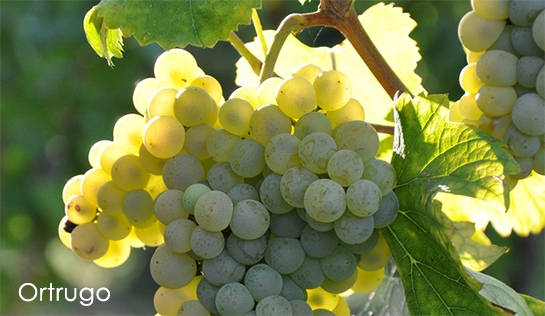
In the very centre of Emilia-Romagna are the flat plains around its capital Bologna, and these are predominantly planted to just one variety intended for one wine style- Lambrusco. Achieving huge fame in the 1970s, this light, frothy and often slightly sweet red was the wine to bring to a dinner party (alongside Blue Nun and Mateus of course). Whilst the majority of this area produces cheap, supermarket-level Lambrusco, there are actually 5 DOC quality regions that produce Lambrusco of a higher quality- more like the style that originally made it famous. A little known fact is that the high-quality wines from these DOCs are perfectly matched to the world-famous Parmigiano Reggiano, made right here!
The next distinctive region runs along Italy’s central spine of mountains which form the natural border with Tuscany to the south. This section is small yet mighty, called the Colli Bolognesi DOC, and it spreads across the hills due south of Bologna. Both red and white wines are produced here, and wines must be made from at least 85% of the stated variety. Colli Bolognesi winemakers work with a combination of native Italian grape varieties and a number borrowed from France. The red wines are produced from Merlot, Barbera and Cabernet Sauvignon, while the whites are based on Pignoletto, Pinot Bianco, Riesling Italico (Welschriesling), Sauvignon Blanc and Chardonnay. Within this DOC is the Colli Bolognesi Classico Pignoletto DOCG– one of the two highest quality regions in Emilia-Romagna. This tiny appellation makes wine from only 1 variety, the native white grape Pignoletto, which is the Italian equivalent of Chablis.
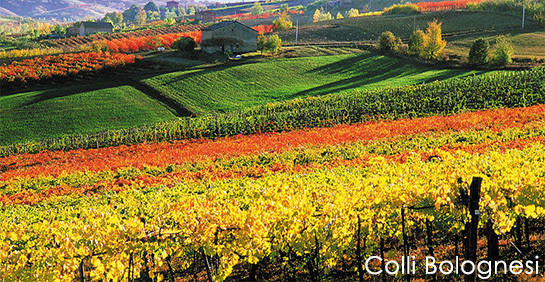
The final zone within Emilia-Romagna is in the very east of the state known as the Romagna Hills as they run into the Adriatic Sea. This zone is home to both the best and worst Emilia-Romagna can produce. This zone is more influenced by the sea and less so by mountains, and the vast majority of bottles produced here are bog-standard, entry level wines made from tasteless and over-cropped grapes- this stands true for both red Sangiovese and white Trebbiano. The whole zone is covered by the Romagna DOC, and the wines made under this huge appellation are variable to say the least- some producers are trying hard and getting good results, though they are few and far between. In the very north east, right on the coast is the flat and fertile Bosco Eliceo DOC, which makes reds from a blend of Merlot and local varietal Brugnolo, and interestingly enough makes white wines out of Sauvignon Blanc! Three appellations run along the southern spine of mountains as it approaches the sea, the Colli d’Imola DOC, Colli di Faenza DOC and Colli di Rimini DOC. These 3 are notable due to their reliance on international varietals to be blended with local ones. The main varieties grown in these DOCs are Cabernet Sauvignon, Merlot, Barbera, Sangiovese, Chardonnay, Sauvignon Blanc, Pinot Bianco, Trebbiano and Pignoletto. The second and final highest quality appellation in Emilia-Romagna is located in the very south east of this zone, called Albana di Romagna DOCG. This appellation was the first DOCG granted to Emilia-Romagna back in 1987, and there was controversy surrounding its elevation to this highest of quality designations. Made entirely from the rare native Albana variety, which is a high acid, thin-skinned and relatively neutral white grape, kind of like Italy’s version of Semillon. The DOCG covers still, sparkling and sweet whites, though the best wines are the passito styles, which are produced when the grapes are left to dry on mats to concentrate their flavour and increase sugar levels, then slowly vinified in old oak. This golden nectar is one of Italy’s best sweet wines, often considered Italy’s equivalent to France’s Sauternes, with flavours of quince, apricot and nuances of magnolia, honey and spice.

0 recipes selected, Page 1 of 1
0 recipes selected, Page 1 of 1
